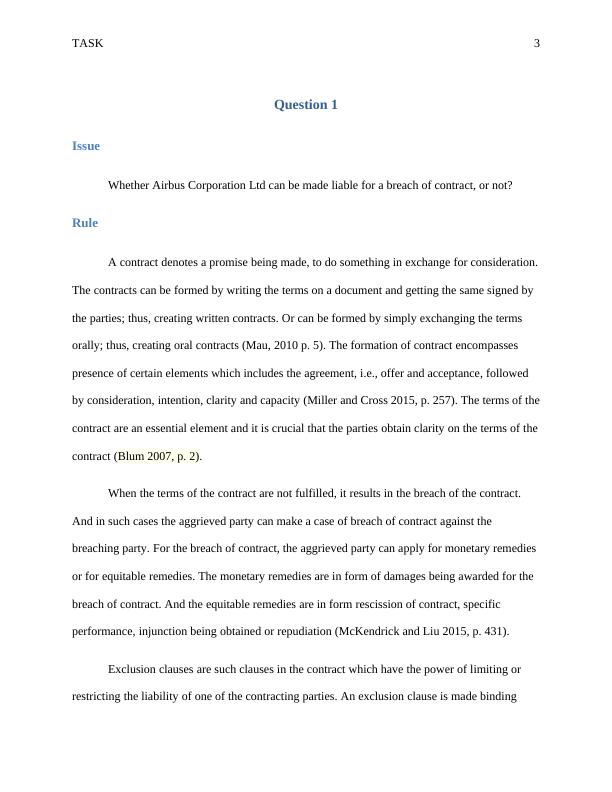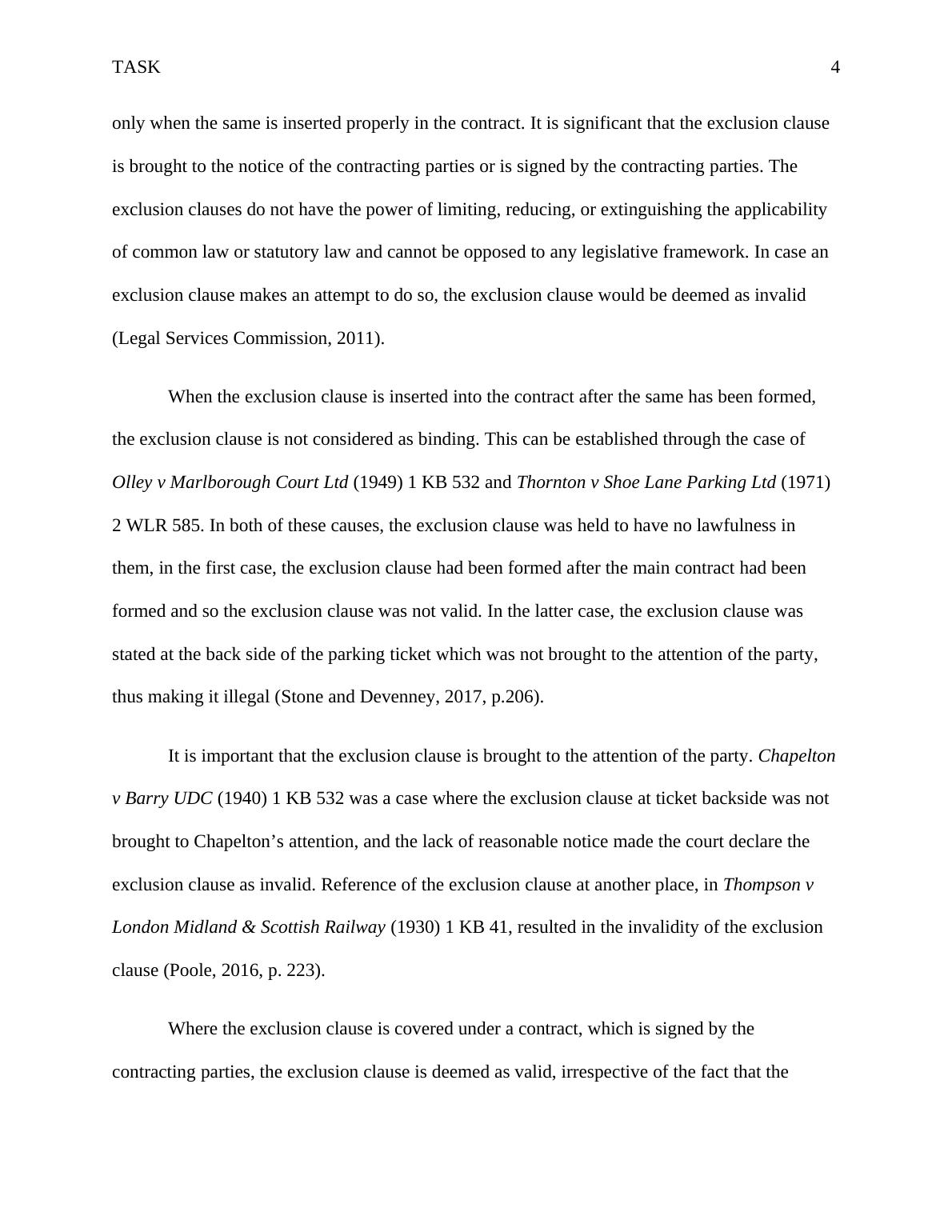The Applicability of Common Law or Statutory Law
13 Pages3052 Words47 Views
Added on 2020-02-18
The Applicability of Common Law or Statutory Law
Added on 2020-02-18
ShareRelated Documents

TASK2ContentsQuestion 1........................................................................................................................................3Issue.............................................................................................................................................3Rule..............................................................................................................................................3Application..................................................................................................................................5Conclusion...................................................................................................................................6Question 2........................................................................................................................................6Issue.............................................................................................................................................6Rule..............................................................................................................................................6Application..................................................................................................................................9Conclusion.................................................................................................................................10References......................................................................................................................................11

TASK3Question 1IssueWhether Airbus Corporation Ltd can be made liable for a breach of contract, or not?RuleA contract denotes a promise being made, to do something in exchange for consideration.The contracts can be formed by writing the terms on a document and getting the same signed by the parties; thus, creating written contracts. Or can be formed by simply exchanging the terms orally; thus, creating oral contracts (Mau, 2010 p. 5). The formation of contract encompasses presence of certain elements which includes the agreement, i.e., offer and acceptance, followed by consideration, intention, clarity and capacity (Miller and Cross 2015, p. 257). The terms of thecontract are an essential element and it is crucial that the parties obtain clarity on the terms of thecontract (Blum 2007, p. 2). When the terms of the contract are not fulfilled, it results in the breach of the contract. And in such cases the aggrieved party can make a case of breach of contract against the breaching party. For the breach of contract, the aggrieved party can apply for monetary remedies or for equitable remedies. The monetary remedies are in form of damages being awarded for the breach of contract. And the equitable remedies are in form rescission of contract, specific performance, injunction being obtained or repudiation (McKendrick and Liu 2015, p. 431). Exclusion clauses are such clauses in the contract which have the power of limiting or restricting the liability of one of the contracting parties. An exclusion clause is made binding

TASK4only when the same is inserted properly in the contract. It is significant that the exclusion clause is brought to the notice of the contracting parties or is signed by the contracting parties. The exclusion clauses do not have the power of limiting, reducing, or extinguishing the applicability of common law or statutory law and cannot be opposed to any legislative framework. In case an exclusion clause makes an attempt to do so, the exclusion clause would be deemed as invalid (Legal Services Commission, 2011). When the exclusion clause is inserted into the contract after the same has been formed, the exclusion clause is not considered as binding. This can be established through the case of Olley v Marlborough Court Ltd (1949) 1 KB 532 and Thornton v Shoe Lane Parking Ltd (1971) 2 WLR 585. In both of these causes, the exclusion clause was held to have no lawfulness in them, in the first case, the exclusion clause had been formed after the main contract had been formed and so the exclusion clause was not valid. In the latter case, the exclusion clause was stated at the back side of the parking ticket which was not brought to the attention of the party, thus making it illegal (Stone and Devenney, 2017, p.206). It is important that the exclusion clause is brought to the attention of the party. Chapeltonv Barry UDC (1940) 1 KB 532 was a case where the exclusion clause at ticket backside was not brought to Chapelton’s attention, and the lack of reasonable notice made the court declare the exclusion clause as invalid. Reference of the exclusion clause at another place, in Thompson v London Midland & Scottish Railway (1930) 1 KB 41, resulted in the invalidity of the exclusion clause (Poole, 2016, p. 223). Where the exclusion clause is covered under a contract, which is signed by the contracting parties, the exclusion clause is deemed as valid, irrespective of the fact that the

End of preview
Want to access all the pages? Upload your documents or become a member.
Related Documents
Business & Corporation Law- Case Studylg...
|12
|2891
|143
Business Law - Qantas Airlines Ltdlg...
|10
|2240
|201
Business Law Legal Analysis Reportlg...
|10
|2583
|55
Law Assignment Australian Contracts & English Common Lawlg...
|12
|2556
|144
Business Laws Issues | Assignmentlg...
|10
|2041
|145
Business Laws | Question and Answers | Qantas and Airbuslg...
|10
|2263
|158
